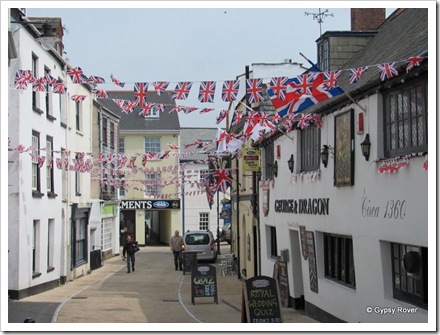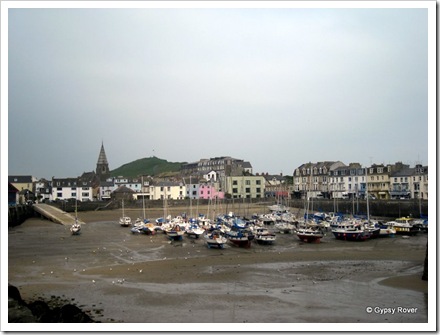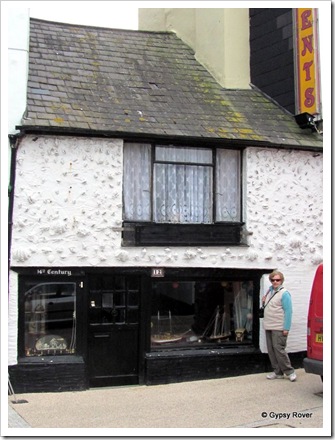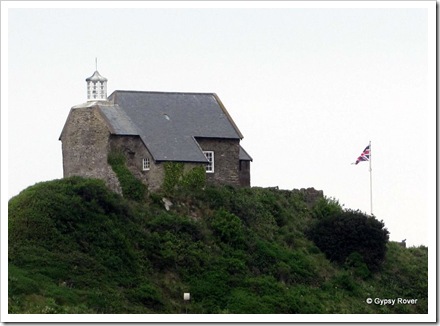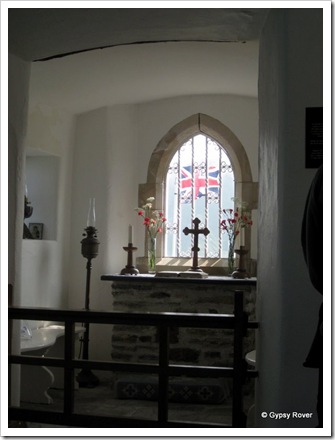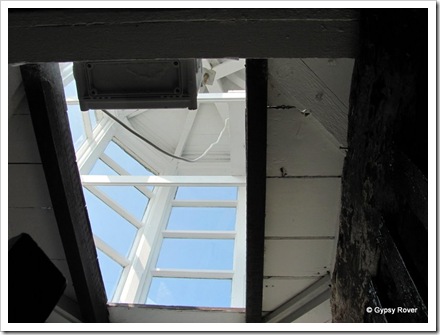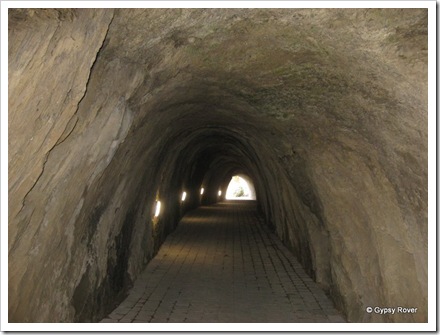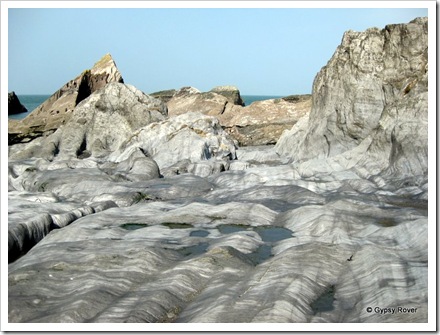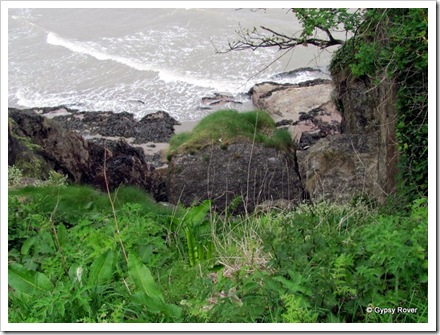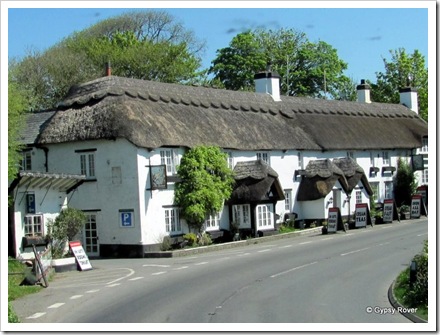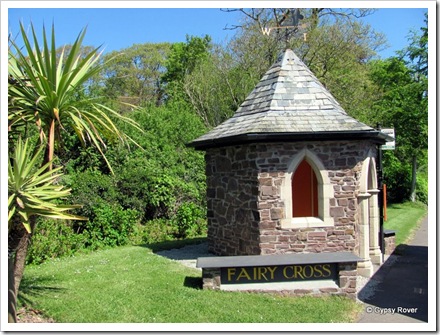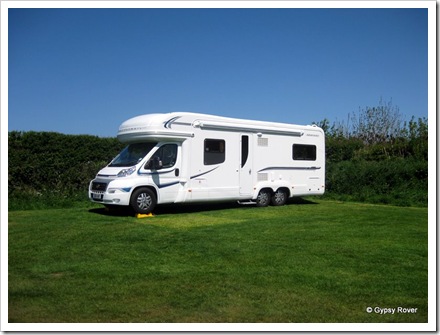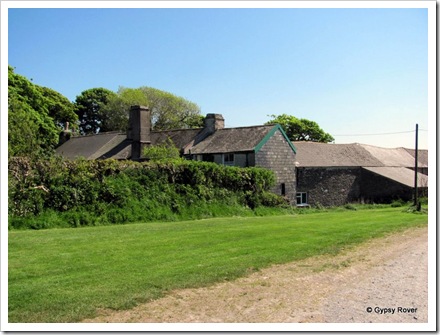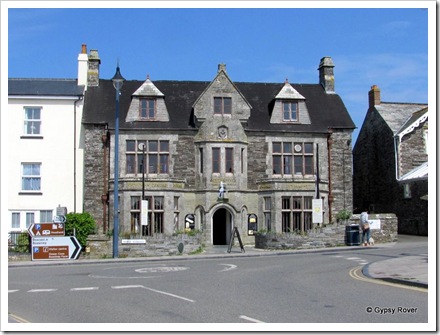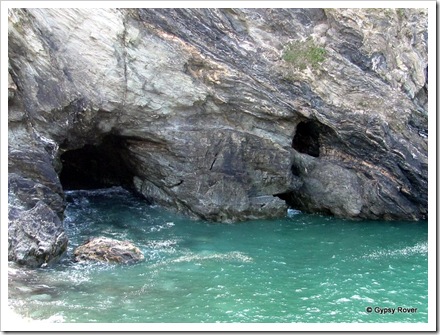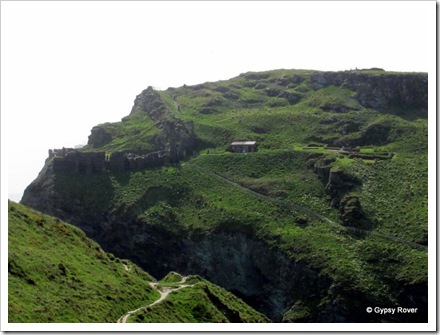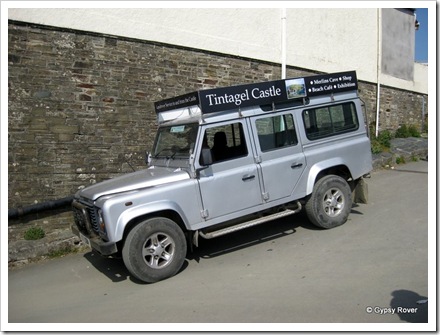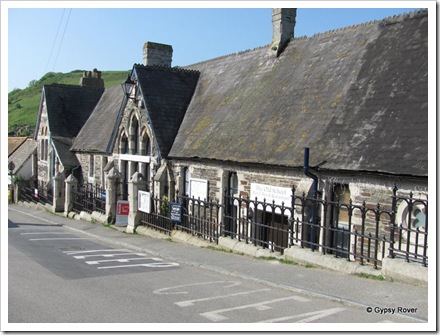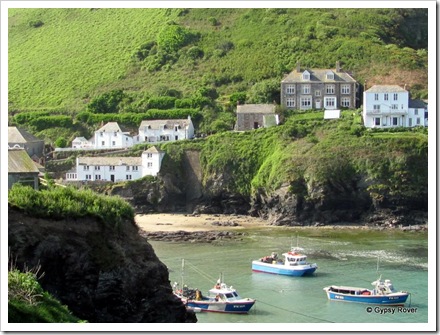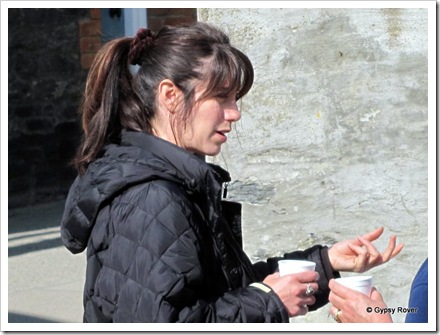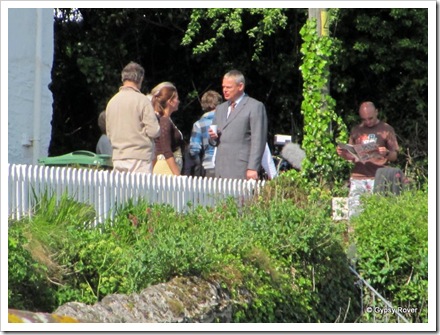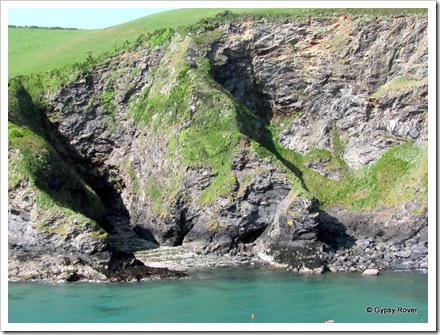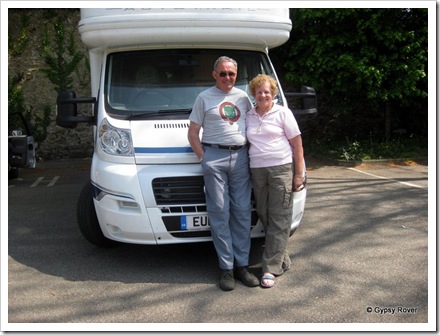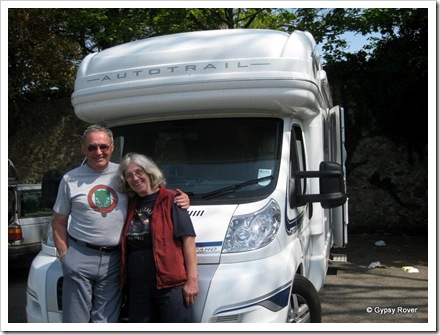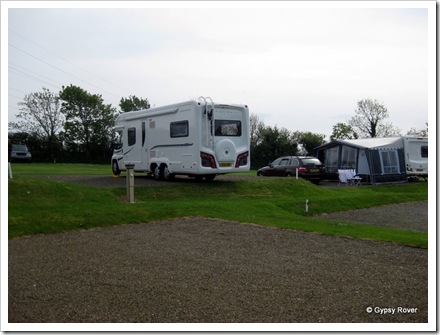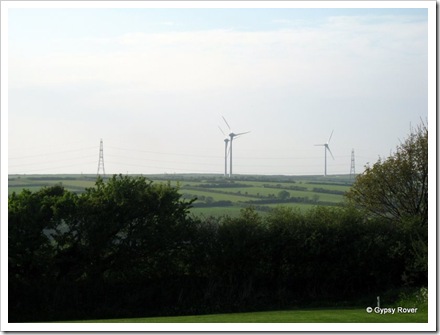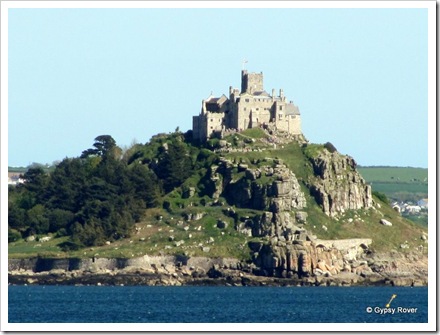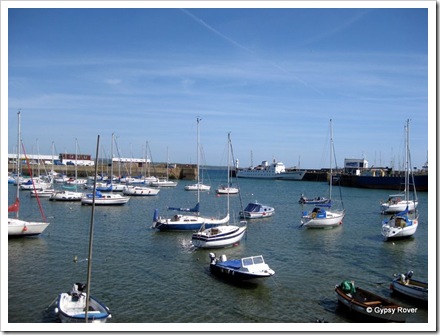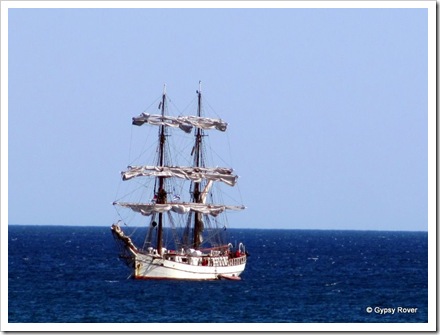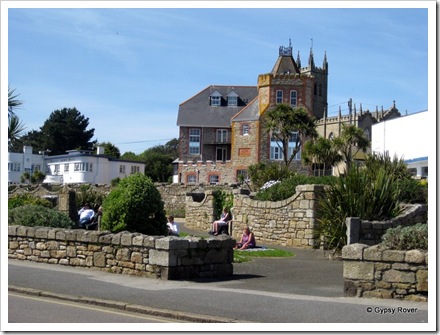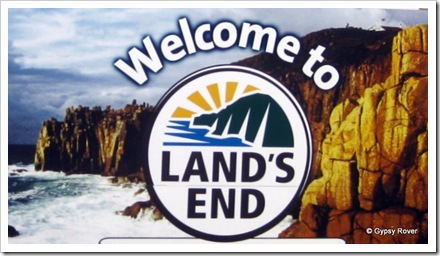
Decisions, decisions. Where to go, what to see. With it being Easter Monday public transport was on Sunday service so this restricted our movements some what. We eventually caught a #300 open top tour bus to Lands End where we took some photo’s from the top deck. We only had 10 minutes and we were on our way again through Sennen where the bus went down hill into the village OK but struggled coming back up.
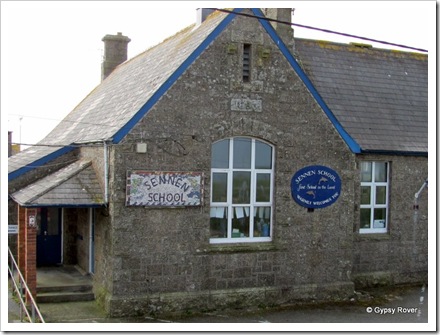 Sennen school, the first school in the land.
Sennen school, the first school in the land.
It was then on to St Just and Botallack where the road was so narrow through the main street passengers on both side of the bus could touch the buildings simultaneously,scary. Onto our final destination which was Geever Tin Mine. We had 4 hours before the next bus and thought we would be bored stiff but that was far from the truth.
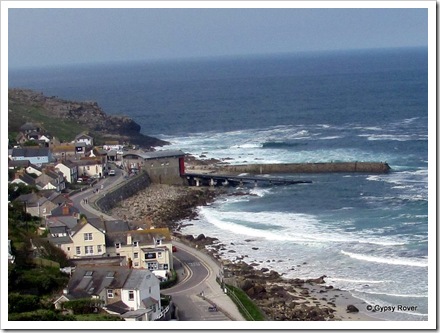 Sennen village below us on the open top bus.
Sennen village below us on the open top bus.
A walk through part of the old mine with barely five foot headroom in places and only wide enough for one person to get through at a time. We were shown how the mine boys of about 11 or 12 years of age would hand drill a work face of 6 feet wide in steps of four feet high to the height of 48 feet. One boy on each step would drill 3 holes 4 feet deep in a 7 hour shift using just a lump hammer and 3 different length iron spikes with a tempered chisel end.
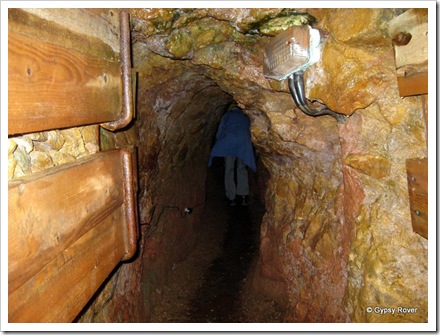 A tight fit through here.
A tight fit through here.
Once this was finished a miner would come along and charge each hole with gun powder, insert a fuse consisting of about 10 goose feather quills trimmed on the sides and ends and inserted end on end. These were then filled with gunpowder and inserted in each hole and then plugged with clay. The miner using the candle on his helmet then started lighting the fuses at the bottom and then scrambling up the steps lighting more fuses as he went. If he was nimble enough he would be at least 4 steps up before the bottom step exploded followed all the way to the top.
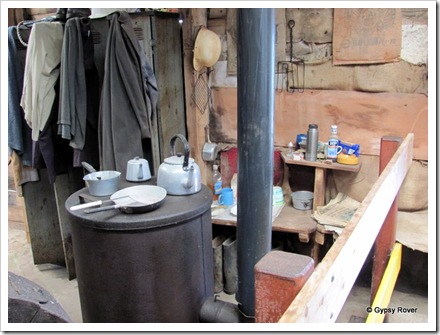 Miners are never far from their work even at meal times.
Miners are never far from their work even at meal times.
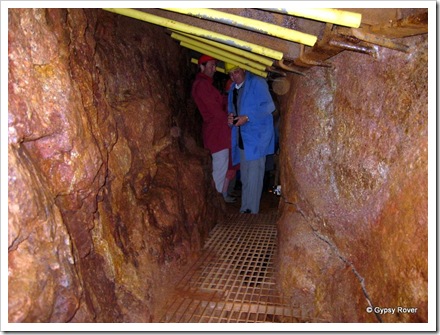 A tin rich seam in Geever mine.
A tin rich seam in Geever mine.
All the rock was then shovelled down shafts to another working below where it was loaded into boxes with handles to be carried away by 2 boys to where it could be hauled up to the surface for the next process. This was carried out by women who were known as Balmaids (often only 12 or 13 years old). Their job was to pound the rock into powder using a tool similar to a 5lb sledge hammer with a broader head. They had to swing this hammer for 7 hours a day and were paid by their output. They were the only women to earn their own income in the 19th century. At home these women were the boss because their menfolk dare not argue with them as they might come off second best. Needless to say deafness was a way of life among Cornish mining families.
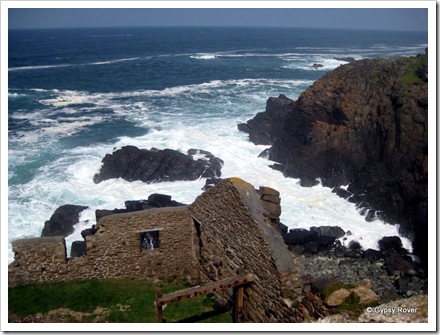 Buildings were built precariously close to cliff faces.
Buildings were built precariously close to cliff faces.
The mines around Cornwall yielded about 7% tin from the rock mined so there was a very high wastage which was just dumped over the cliffs. Some mines extended miles out under the sea bed where water entering the mines was a problem until the invention of Beam engines which could keep the mines water free by pumping it out. The end of tin mining came to an end in 1990 when the price of tin dropped from £10,500 per ton to £3,500 making it unprofitable. Tin is now mined overseas where it’s possible to use open cast mining and is cheaper to produce. There were also by products of Copper and Arsenic but Tin was the mainstay for the miners.
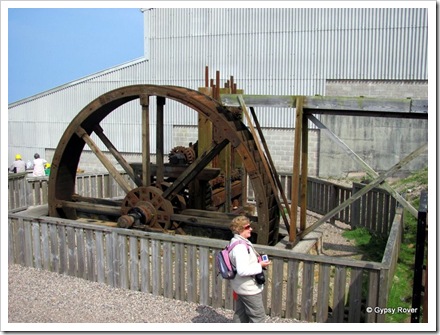 The first mechanised stamping machine operated by water.
The first mechanised stamping machine operated by water.
Between 1880 and 1890 130,000 Cornish miners and 40,000 family members emigrated to America, Africa, Australia and New Zealand in search of a better way of life. They mined for precious metals and stones and those lucky enough to strike it rich returned to their birthplace to retire or take on a less strenuous form of work.
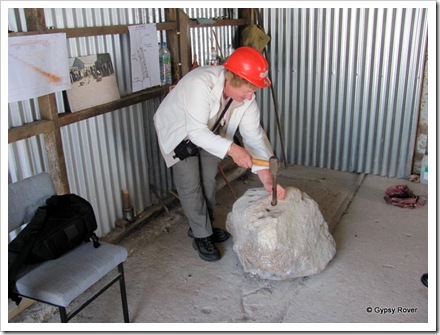 Dot trying her hand at hand drilling at the Geever tin mine.
Dot trying her hand at hand drilling at the Geever tin mine.
It transpired that 4 hours wasn’t long enough and we had to miss out on some of the displays or we would have missed the bus back to camp. We did contemplate going to Lands End and taking the cliff walk back through Sennen, onto Sennen Cove and then up the hill to camp but we thought this might be taking on too much so left the bus at the camp gate.
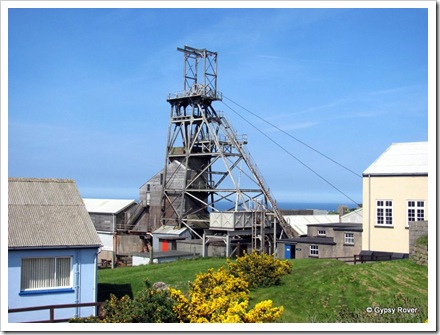 Geever Tin Mine, Cornwall.
Geever Tin Mine, Cornwall.
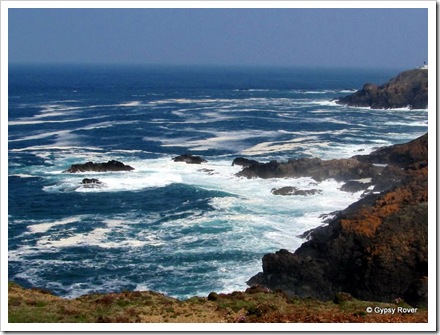 Wild Cornish coastline.
Wild Cornish coastline.



